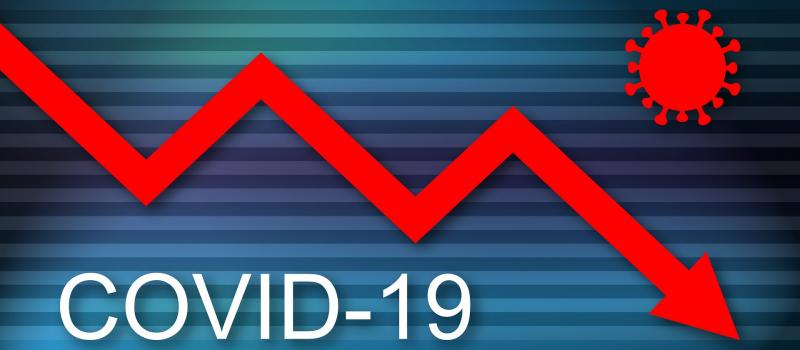Continuing Job Losses in Swing States May Seal Trump’s Fate
posted by Robert Shapiro on October 23, 2020 - 12:00am

This article originally appeared in Washington Monthly.
As Donald Trump sees it, “We are leading the World in Economic Recovery.” Yet, less than two weeks before election day, the economy is weaker than he will ever acknowledge. The number of employed Americans in September was still 7 percent below the levels in February: Eight months into the pandemic, 10.7 million fewer people have jobs than before COVID-19. Those job losses are more than twice as great as those seen eight months into the Great Recession. And ominously for the president’s political fortunes, the recovery has not reached millions of Americans whose votes he most needs to win. Jobs issues could well imperil Trump’s reelection hopes, especially in critical swing states.
To be sure, conditions are better than when employment collapsed in April and May. But as Federal Reserve Board chair Jerome Powell warned earlier this month, jobs and growth could well stumble without substantial new stimulus and relief, leading to “a weak recovery” and “unnecessary hardship for households and businesses.” Right now, that’s where we’re headed. The House of Representatives approved such a package months ago, but Senate Republican leaders persist in refusing even to consider it.
The employment numbers are especially bad in many states that Trump won very narrowly in 2016 and are often concentrated in the voter groups that provided his greatest support. The continuing job losses exceed or nearly equal the 7 percent nationwide drop in five critical swing states. Compared to February, pre-COVID, the number of people employed in September was down 10.1 percent in Michigan, down 8.4 percent in Pennsylvania, down 7.4 percent in Ohio, down 7.2 percent in Wisconsin, and down 6.5 percent in North Carolina.
The topline jobs numbers aren’t quite that terrible in some other swing states. But looking at precisely who has lost jobs across the critical states, the news is bad for Trump even in less-affected places. Let’s start with how these job losses affect Americans based on their education. Trump’s support has always been concentrated among Americans with high school degrees or less. Employment among those without high school diplomas is now seriously depressed in three must-win states – down since February by 14.2 percent in Florida, 12.5 percent in Pennsylvania, and 9.5 percent in Wisconsin.
The jobs losses among Americans with high school diplomas are even greater. The number of high school graduates employed in September, as compared to February, is down 15.4 percent in Pennsylvania, down 15.2 percent in Arizona, down 14.5 percent in Michigan, down 8.1 percent in Georgia, and down 7.9 percent in North Carolina. These staggering job losses help explain why, according to the Pew Research Center, Trump’s lead over Joe Biden among people with a high school education or less has narrowed from 51 percent to 44 percent in 2016 to 49 percent to 45 percent this month.
In 2016, Trump also had a seven percentage-point advantage with voters with “some college” – the tens of millions of Americans who attended college without earning a bachelor’s degree. The number of people in this group employed in September, as compared to February, has contracted sharply in six of the swing states. Their employment is down an astounding 23.0 percent in North Carolina, down 16.7 percent in Arizona, down 12.5 percent in Florida, down 10.1 percent in Georgia, down 8.6 percent in Ohio, and down 8.4 percent in Pennsylvania. These staggering job losses help explain why Trump’s 49 to 42 percent advantage with these voters in 2016 has become a 48 percent to 46 percent advantage for Joe Biden.
College-educated Americans have suffered the least from the COVID-19 downturn. Nationwide, the number of college graduates with jobs was 3.8 percent less in September than in February. In two swing states, however, their employment has also fallen sharply – down 10.0 percent in North Carolina, and down 9.2 percent in Michigan. To be sure, Trump’s support from Americans with bachelor’s or advanced degrees eroded long before the pandemic. Even so, Biden today holds a 20 percentage-point advantage among college graduates and a 40 percentage-point advantage with those with postgraduate degrees.
Given Trump’s regular efforts as a candidate and as president to use race and ethnicity to enrage and divide Americans, his hopes for reelection also rest on serious majority support from white voters. However, job losses by white people in three swing state may well factor into the result. Employment by white people in September, as compared to February, was down 8.6 percent in Arizona, down 8.4 percent in Michigan, and down 8.0 percent in Florida, all above the 7 percent national average. Trump carried white voters in 2016 by a 52 to 41 percent margin, or 11 percentage points. Current job losses among white Americans may help explain why his advantage with them has narrowed to 51 to 44 percent.
The extraordinary jobs losses across groups that have given Trump his foundational political support almost certainly explain why he has forfeited his longstanding advantage on handling the economy. With less than two weeks until election day, Biden and Trump are now tied on the issue. Moreover, the most recent Gallup poll found that 89 percent of Americans see the economy as an extremely or very important issue, even more than the 77 percent who see the government’s response to the pandemic as comparably important. Either candidate could still seize the initiative and focus on restoring full employment, especially in the swing states. Given the enormous job losses under Trump, the advantage clearly rests with Joe Biden.

